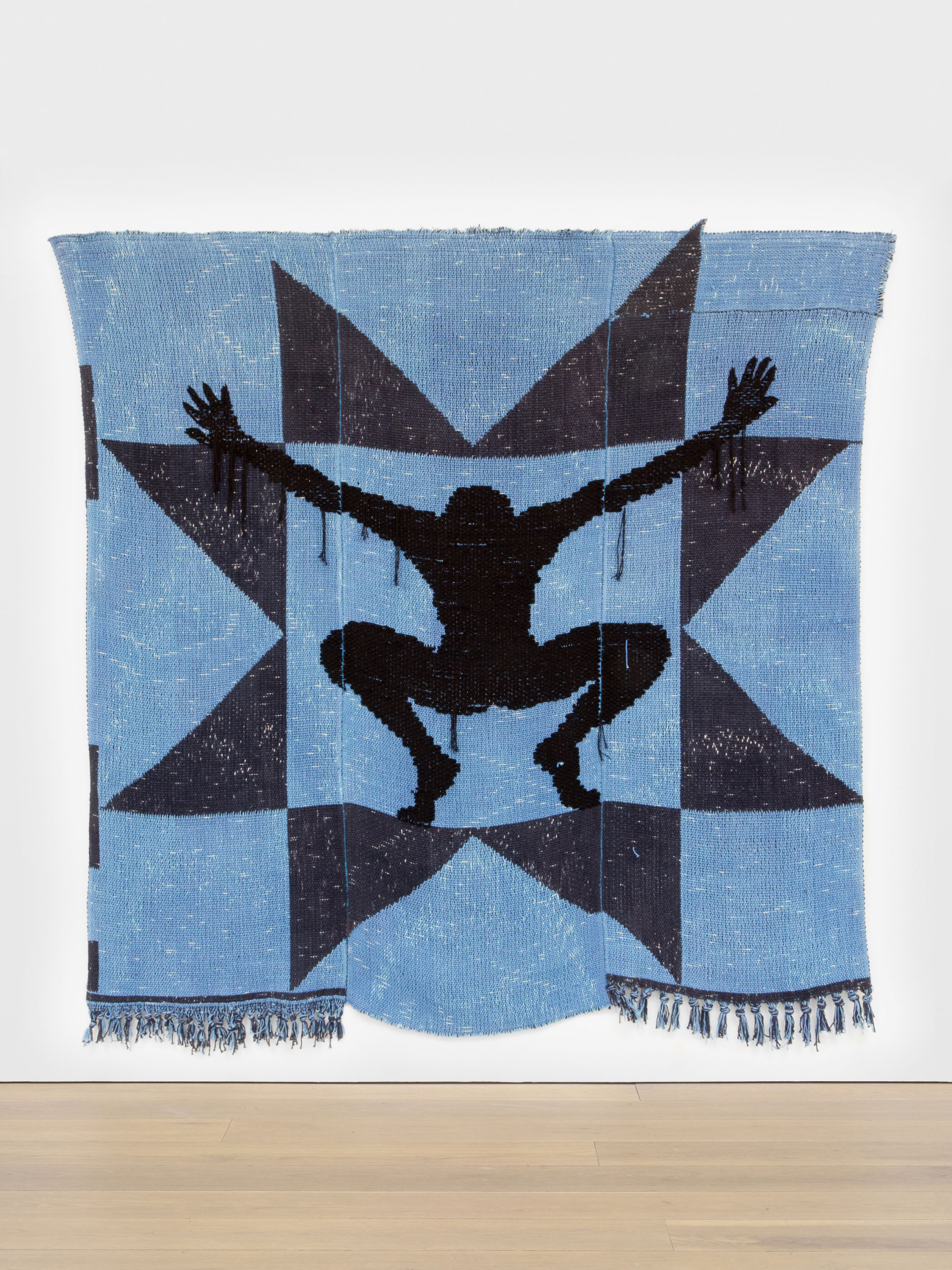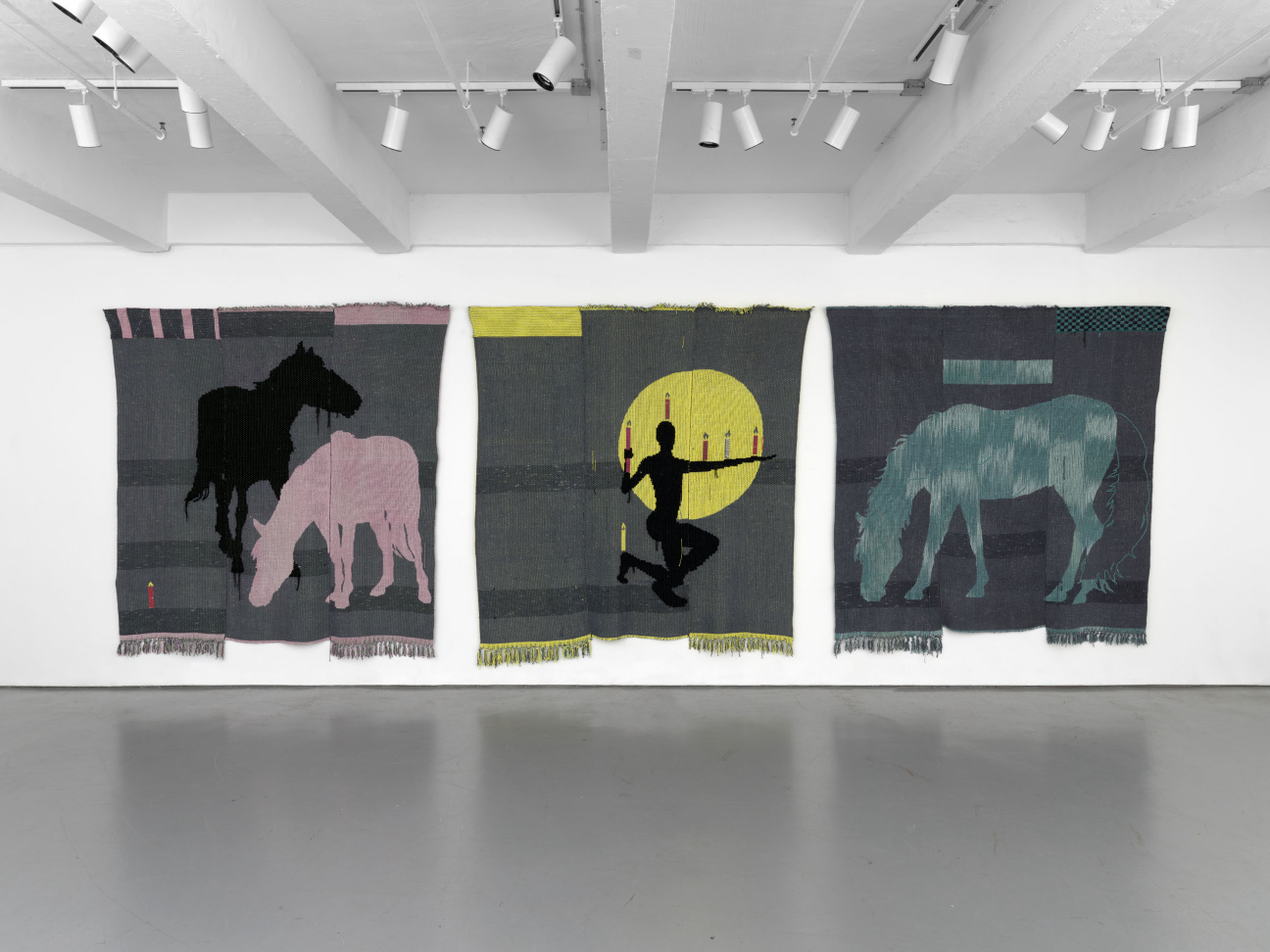
Across Jack Shainman Gallery’s two New York locations, a series of woven tapestries depict an uncertain place, in an uncertain time. This hazy realm is a creation of Los Angeles-based artist, Diedrick Brackens, who has assembled its mythology over the course of his career, punctuating it with the sigils and characters that dance throughout his oeuvre.
This new exhibition, “blood compass,” encounters the imagined space at dusk, twilight, and nighttime. Human silhouettes act out scenes that make reference to the Bible or works by authors like Octavia E. Butler and poet Wendy Videlock. Even cast in shadow, the characters’ awe-struck navigation of Brackens’s universe and their relationships, to each other and power, is clear.
It reflects the Texas native’s ongoing exploration of Black and queer experiences in the real world’s often fraught landscape. The work—crafted from hand-dyed cotton using a combination of West African, European, and American techniques—is meant to spur the viewer to action. Here, Brackens reveals his hope for the show’s impact, and where he hopes to transport his audience next.

CULTURED: What do you hope visitors take away from the exhibition?
Diedrick Brackens: I cannot teach visitors how to dream, but I hope that I can reorient them in the same way I try to reorient myself through these objects. I hope the viewers are animated by the visions in my world-making to seek joy and to interrogate power. These two practices must be undertaken together: we strive not to reproduce violence, and work to expose those systems that do while dreaming of a better planet and asserting a right to joy.
CULTURED: How does the history of tapestry-making inform your own practice?
Brackens: Tapestry and many other textile traditions seek to communicate through a visuality that can be interpreted by the initiate. I am inspired by not just this one tradition but others like Asafo flags, Kente weaving, and North American quilting. Tapestries are invested in telling the stories of war, conquest, and subjugation of peoples and land, and in my practice, I am rooted in creating counter-narratives as a way to contribute to the discipline.

CULTURED: What keeps you returning to influences like Octavia E. Butler or Wendy Videlock?
Brackens: Wendy Videlock’s poem [How you might approach a foal] resonates deeply with me; it illuminates the work of tenderness. This lesson, I find, is most often applied personally on a romantic register but also extends to my work and my life at large. It has been one of my greatest works in progress: tenderness, trying to love, and asking to be loved, like a lagoon, like a pearl…
CULTURED: How would you describe the world or space in which these characters exist?
Brackens: This “world” asserts itself everywhere and is so manifold and unpredictable. It’s in the eye of the needle, in my heart, a shared breath in the woods at night, at the bottom of a lake, in the message from an ex, in two sheep mannequins in Los Feliz, in a Bed-Stuy brownstone. I have found it at the following coordinates: 34.3077, -118.069.
CULTURED: Given the amount of recurring motifs in your work, how important is it to you that the audience understands your visual language, as opposed to understanding the overall emotional impact?
Brackens: I hope viewers can unpack the archetypes I present and find the ways my images may or may not align with the ideal. I hope to open space for reinterpreting what we think we know.
“blood compass” by Diedrick Brackens is on view at Jack Shainman Gallery’s West 20th St location through June 1, 2024.










 in your life?
in your life?

